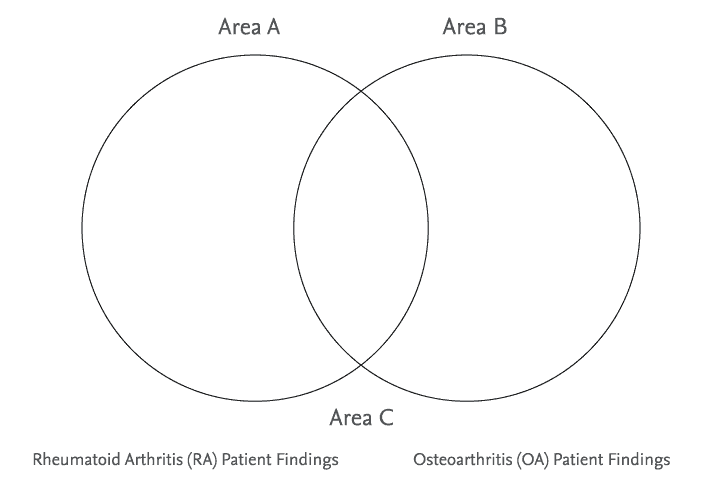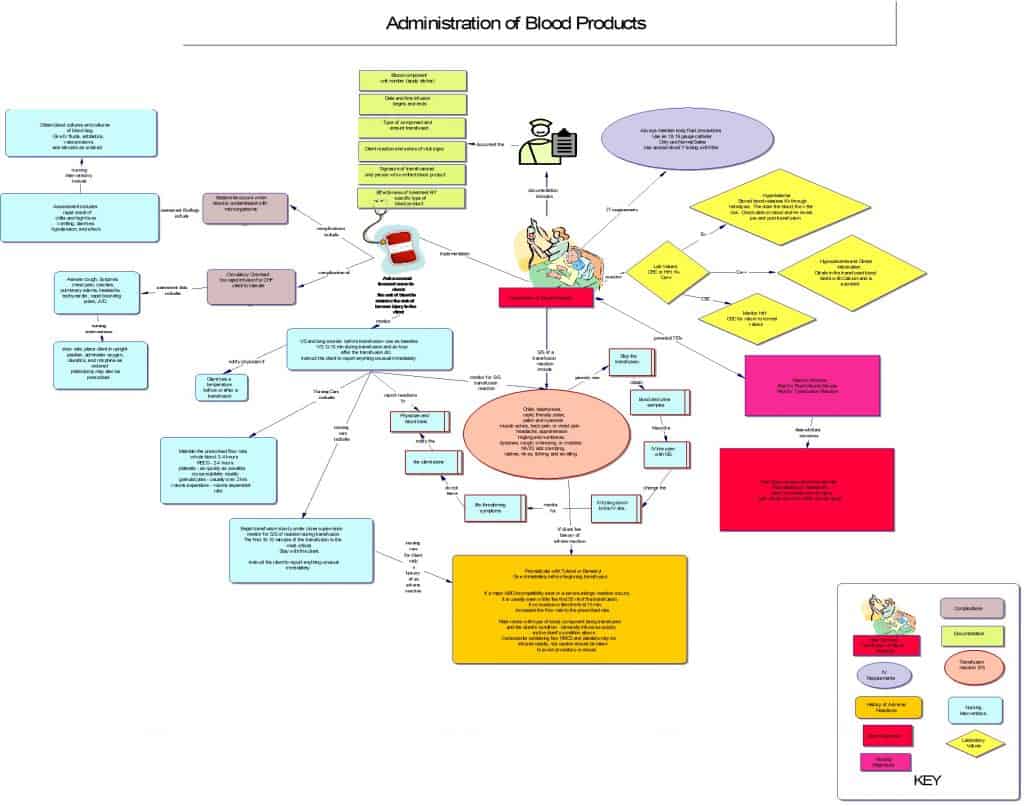
The term graphic organizers refers to a variety of learning tools that visually present relationships between and among pieces of knowledge or concepts. These tools can be very simple or more complex and can be used for students at any learning level. Graphic organizers can be educator-generated or learner-developed, depending on their specific purpose. For educator-generated graphic organizers, the educator may want to complete part of the tool and ask learners to complete the remainder of it.
In pre-licensure nursing programs, graphic organizers can be used to enhance learning and/or critical thinking, especially skills needed to make appropriate and safe clinical judgments. Depending on the type of graphic organizer, advantages of these learning tools include:
- Allows students to construct knowledge
- Empowers students to make connections and discover relationships between concepts
- Enables students to practice thinking-in-action like a nurse
- Helps develop a sense of salience to determine what is most important
- Provides an opportunity for active learning
- Provides an opportunity for individual or collaborative learning and thinking
Relationship of Knowledge to Clinical Judgment Skills
Nursing is a knowledge-based profession. While nurses cannot and are not expected to memorize volumes of knowledge, they need to know the most critical information and where to locate other data using reliable resources. In a recent study of new nursing graduates, the National Council of State Boards of Nursing (NCSBN) found that having adequate knowledge is essential for nurses to make appropriate clinical judgments to ensure safe, quality patient care. However, having a strong knowledge base does not guarantee that nurses can make sound clinical judgments (Dickson, et al., 2019).
For some types of graphic organizers, one or more of the six cognitive skills of the NCSBN’s Clinical Judgment Measurement Model (CJMM) can serve as a framework for thinking in-action like a nurse. These skills can be aligned with the steps of the nursing process and include:
- Recognize Cues (Assessment)
- Analyze Cues (Analysis)
- Prioritize Hypotheses (Planning)
- Generate Solutions (Planning)
- Take Action (Implementation)
- Evaluate Outcomes (Evaluation)
Selecting Graphic Organizers as a Learning Tool
As a nurse educator, you can choose from a variety of graphic organizers to apply in the classroom, in clinical learning environments, or online depending on the purpose of the tool. Three effective and “user-friendly” types of graphic organizers are presented here:
- K-W-L Chart
- Venn Diagram
- Concept Map
Grounded in constructivism theory, the three-column K-W-L Chart allows students to connect new nursing knowledge with prior knowledge in any learning environment. For example, at the beginning of the clinical day, you might require students to complete the first two columns of the chart which lists what the student Knows about the assigned patient’s health condition or patient population, and what she or he Wants to know. Completing this information helps stimulate critical thinking and identify learning goals or critical thinking questions for the day. After the student completes the clinical day, newly acquired Learning can be added to the chart in the third column. The learned knowledge may help the student make better clinical judgments.
A partial example of a student’s K-W-L Chart for postoperative care of a patient who had a total knee arthroplasty is presented below:
| KNOW | WANT TO KNOW | LEARN |
| Postoperative patients need to have their pain managed. A total joint arthroplasty is usually very painful. | Identify effective pain management strategies that are most effective for hospitalized patients who have a total knee arthroplasty. | Multimodal therapy combination of opioids, acetaminophen/NSAID, and gabapentin due to opioid crisis. Surgical cutting of bones, nerves and soft tissue causes various types of pain. |
| Postoperative patients are at risk for complications like DVT and infection. | Prioritize interventions to prevent DVT and infection in patients who have a total knee arthroplasty. | Priority to prevent VTE (DVT + PE): Anticoagulants such as LMWHs (Pharm), early Ambulation, and SCDs (Compression) = PAC. Also adequate hydration, leg exercises. IV antibiotic given 1-2 hours prior to surgery to prevent infection. |
The Venn diagram displays two or more overlapping circles to help students compare two or more topics, issues, or concepts as shown below:

To use this particular Venn diagram example, ask each student (or group of students) to identify the relevant assessment data, or patient findings, that are associated with both diseases; e.g., joint pain and stiffness. The student would list these data in the area where the circles overlap (Area C). The student would then identify the relevant assessment findings that are associated only with each disease and place them in Area A and B as appropriate; e.g., finger joint deformities in RA.
To individualize patient care, consider presenting a case study in which an older patient has both RA and OA. Then ask the student to identify the relevant data of immediate concern to the nurse and place the data in the appropriate areas of the Venn diagram. This activity is consistent with the NCSBN CJMM cognitive skill of Recognize Cues, and could be used in the classroom, online, or in the clinical learning environment.
Concept maps are probably the most common graphic organizers used today in the nursing clinical learning environment. However, these critical thinking tools can also be used in the classroom, in the laboratory setting, or online. The purpose of a concept map is to identify pieces of information or data that are then connected to make sense to the learner and facilitate thinking.
As a nurse educator, you may already require students to create concept maps, sometimes called care maps, in place of the traditional linear nursing care plans. A number of structured templates for mapping are available from a variety of sources. However, these templates often display multiple empty boxes where students insert assessment data, nursing interventions, and so forth. While convenient and consistent across student maps, these templates limit the creativity of the learner and often do not provide ample opportunity for learners to make connections among concepts and discover those relationships.
The sample freestyle concept map below delineates the most important information about the nurse’s role in administering blood and blood products. Note that the relationships between pieces of information (concepts) on the map are specified so that the educator can evaluate student thinking for learner-generated work. If you present a map that you developed, be sure to explain the content and connections on the map to role model your thinking and help auditory learners who might feel overwhelmed by a busy visual tool.

The sample concept map also highlights many of the clinical judgment cognitive skills that would be used if complications of this procedure occur. For example, on the left side of the map, circulatory overload is identified as a potential complication of blood administration (Analyze Cues). The relevant data (Recognize Cues) are listed and nursing actions that would be taken are outlined (Take Action). You might ask students to identify which NCSBN CJMM cognitive skills would be used or provide labels for each skill to help organize the information. Therefore, this graphic organizer could be used in the classroom, online, or as part of clinical learning to develop clinical judgment.
In summary, graphic organizers are visual educational tools that you can use in any learning environment to increase knowledge acquisition and develop clinical judgment skills. These evidence-based tools are ideal for nursing students who are diverse in culture and learning preferences.